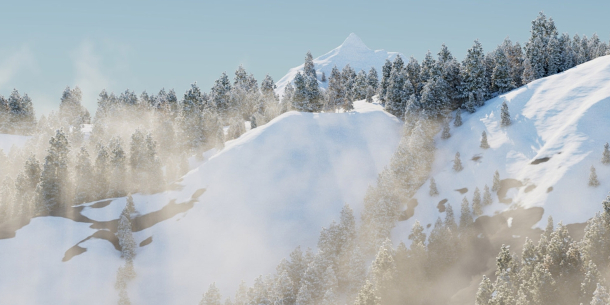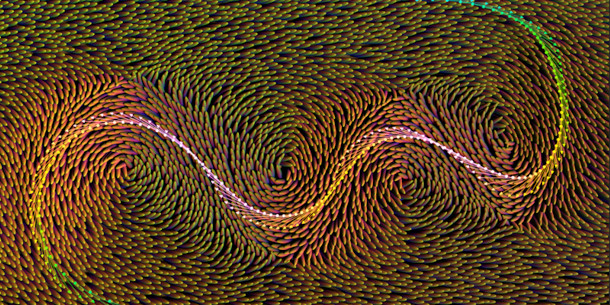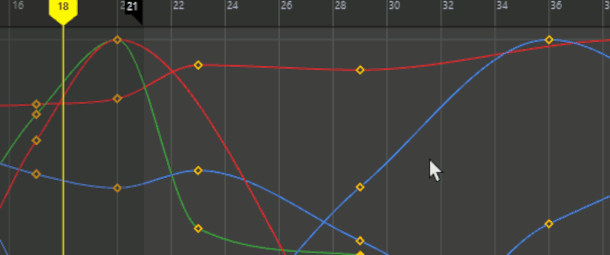Autodesk ships Maya 2020.4 and Maya LT 2020.4

Autodesk has released Maya 2020.4, the latest version of its 3D modelling and animation software.
Most of the new features come inside Bifrost 2.2, a big update to Maya’s multiphysics plugin that broadens it out into a tool for scattering and instancing geometry, and even hair simulation.
It is also now possible to use custom 3D fields to control particle, gaseous fluid or cloth simulations.
Maya LT, the cut-down edition of the software, gets a smaller update, with version 2020.4 adding the option to snap the current time marker to keys in the Graph Editor, and updating the Substance plugin.
Maya 2020.4 only: now bundled with version 2.2 of the Bifrost plugin
The main change in Maya 2020.4 is Bifrost 2.2 for Maya: the new version of the bundled multiphysics plugin.
The add-on, an expanded version of Maya’s original Bifrost Fluids simulation toolset, provides a node-based visual programming enviroment in which to author multiphysics simulations.
As well as liquids, it includes solvers for gaseous fluids, granular materials and cloth.
Bifrost 2.2 for Maya is the second update to the plugin this year, and the most significant since it was released in its present form.
Bifrost 2.2: control simulations via scalar or vector 3D fields
One major change is the option to control simulations via user-defined 3D vector or scalar fields: the former to represent flow or 3D noise, the latter for weighting or signed distance functions.
Existing volumes can be converted to fields, and vice versa, although unlike volumetric representations like OpenVDB, fields provide infinite resolution with little increase in memory overhead.
According to Autodesk, the new fields can “act as dynamics influences on particles, cloth, or aerodynamic simulations – without having to go inside FX compounds to edit them”.

Bifrost 2.2: new options for instancing or scattering geometry
Outside effects workflows, fields can also be used to control the scattering of objects like rocks or trees in a scene: the basis of Bifrost 2.2’s new Scatter Pack.
A collection of new Bifrost compounds for instancing and scattering geometry, it include high-level compounds for scattering points onto geometry and for converting existing point distributions to instances.
Mid-level nodes handle tasks like orienting instances to a mesh or randomising their transformations.

Bifrost 2.2: support for Maya curves, plus updates to the MPM and Aero solvers
Other changes in Bifrost 2.2 for Maya include support for Maya curves, which can now be dragged and dropped into Bifrost graphs where they are converted automatically into Bifrost strands.
Suggested uses include using Maya curves to control object scattering, and even as guide curves for hair simulation, with Bifrost generating interpolated hairs between them: a task normally handled by XGen.
The existing solvers have also been updated, with the MPM (Material Point Method) solver for cloth now generating more accurate collisions and self-collisions.
The Aero solver for gaseous fluids gets support for physical viscosity, better generation of fine details, and improved performance, although Autodesk doesn’t put a figure on the speed boost.
The volume tools have also been updated to support “fully adaptive conversions between meshes and volumes”, and for performing Boolean operations on volumes: for example, to merge adaptive level sets.
Bifrost 2.2: under-the-hood changes and workflow improvements
The way in which Bifrost graphs are represented in Maya has also been restructured, unifying the previously separate nodes used to compute a graph and to represent its output in the viewport or in offline renders.
By default, Bifrost graphs are now represented as DAG nodes, each of which combines a Bifrost graph node with a Maya shape node.
It is also now possible to drag and drop a graph from the Outliner into a second graph in the Bifrost Graph Editor, making it easier to create chains of sub-graphs.
The first graph is not recomputed unless required, so the workflow can be used to put a heavy simulation in one graph, then iterate on it quickly by applying post-sim effects in a second graph.
Other changes include the option to hit [Esc] to stop the computation of a Bifrost graph, making it easier to abort failed simulations. You can find a full list via the links at the foot of this story.
Maya 2020.4 only: updates to the Arnold and Rokoko integration plugins
Outside Bifrost, MtoA, the Maya integration plugin for Autodesk’s Arnold renderer, has been updated to support the new features introduced in Arnold 6.1 earlier this year.
The integration plugin for Rokoko’s motion library also gets a minor update, adding a new orbit function when previewing a motion applied to a character.

Maya and Maya LT 2020.4: updates to the graph editor and Substance plugin
Maya LT 2020.4 is a much smaller release, with the only new feature in the core software being the option to snap the current time marker in the Graph Editor to the animation key selected.
The bundled Substance plugin, which makes it possible to edit procedural materials in Adobe’s .sbsar format inside Maya, has also been updated to support the new node types in Substance Designer 20202.2.
Both changes are also present in Maya 2020.4 itself.
Pricing and availability
Maya 2020.4 is available for Windows 7/10, RHEL/CentOS 7.3-7.7 Linux and macOS 10.13+ on a rental-only basis. Full subscriptions cost $205/month or $1,620/year.
In many countries, artists earning under $100,000/year and working on projects valued at under $100,000/year, now qualify for Maya Indie subscriptions, currently priced at $265/year. Full details here.
Maya LT 2020.4 is available for Windows 7/10 and macOS 10.13+ on a rental-only basis. Subscriptions cost $35/month or $265/year.
Read an overview of the new features in Bifrost 2.2 for Maya on Autodesk’s blog
Read a full list of new features in Maya 2020.4 in the online release notes
Read a full list of new features in Maya LT 2020.4 in the online release notes
